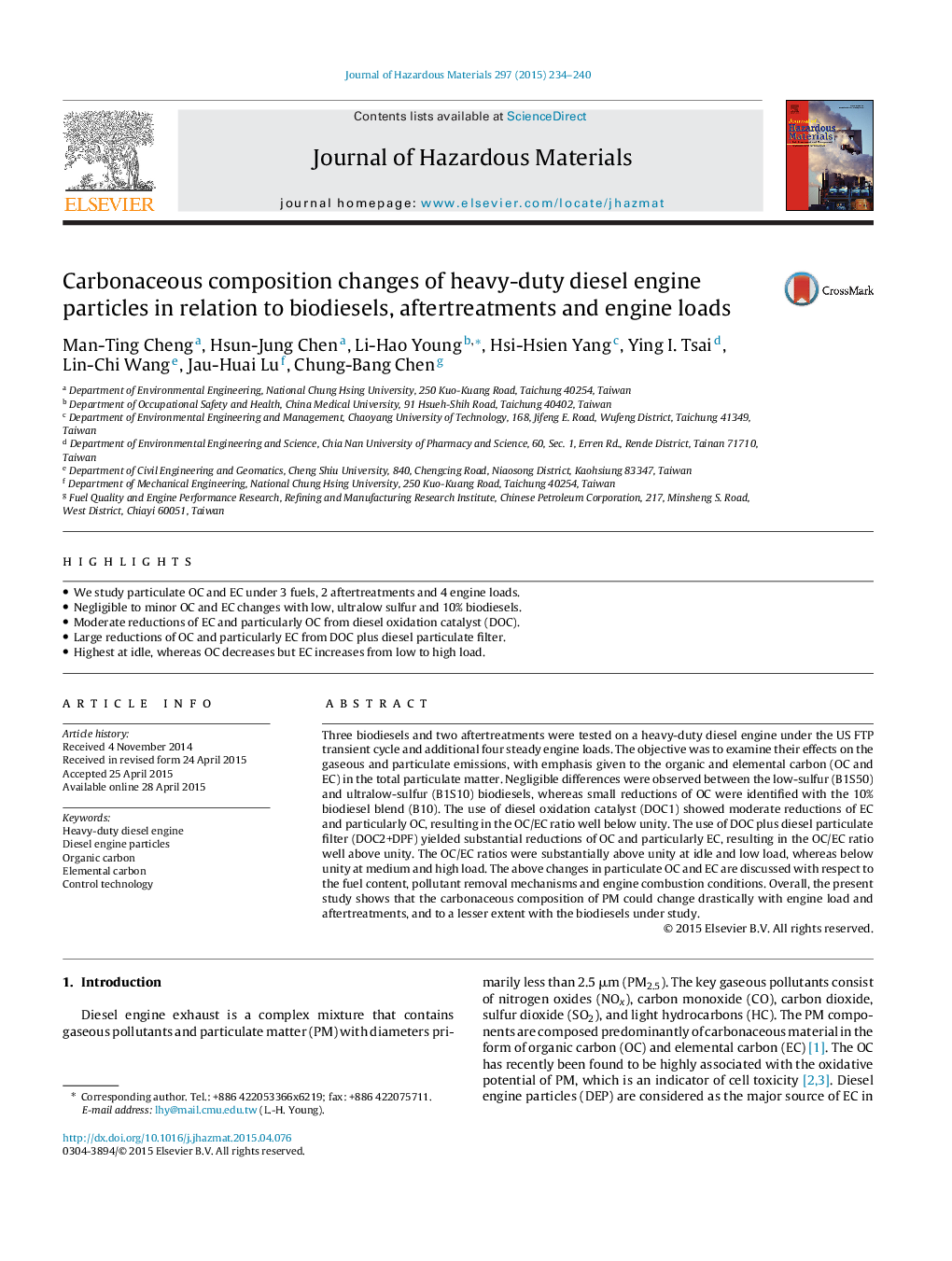| Article ID | Journal | Published Year | Pages | File Type |
|---|---|---|---|---|
| 6970949 | Journal of Hazardous Materials | 2015 | 7 Pages |
Abstract
Three biodiesels and two aftertreatments were tested on a heavy-duty diesel engine under the US FTP transient cycle and additional four steady engine loads. The objective was to examine their effects on the gaseous and particulate emissions, with emphasis given to the organic and elemental carbon (OC and EC) in the total particulate matter. Negligible differences were observed between the low-sulfur (B1S50) and ultralow-sulfur (B1S10) biodiesels, whereas small reductions of OC were identified with the 10% biodiesel blend (B10). The use of diesel oxidation catalyst (DOC1) showed moderate reductions of EC and particularly OC, resulting in the OC/EC ratio well below unity. The use of DOC plus diesel particulate filter (DOC2+DPF) yielded substantial reductions of OC and particularly EC, resulting in the OC/EC ratio well above unity. The OC/EC ratios were substantially above unity at idle and low load, whereas below unity at medium and high load. The above changes in particulate OC and EC are discussed with respect to the fuel content, pollutant removal mechanisms and engine combustion conditions. Overall, the present study shows that the carbonaceous composition of PM could change drastically with engine load and aftertreatments, and to a lesser extent with the biodiesels under study.
Related Topics
Physical Sciences and Engineering
Chemical Engineering
Chemical Health and Safety
Authors
Man-Ting Cheng, Hsun-Jung Chen, Li-Hao Young, Hsi-Hsien Yang, Ying I. Tsai, Lin-Chi Wang, Jau-Huai Lu, Chung-Bang Chen,
